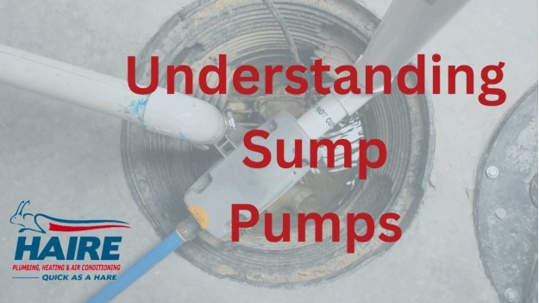Are you considering adding a sump pump to your home but don’t know if it’s worth the hassle? Fayetteville has areas that are prone to flooding and if your home is in one of those areas, and you don’t already have a sump pump, then adding one could help keep your home/basement dry.
In this blog post, we'll delve into how sump pumps work, the different types available, and some tips for maintaining them to keep your basement dry and your home’s structure sound.
A sump pump is a submersible pump placed in the lowest part of a basement or crawlspace. Its primary role is to help keep the area under the building dry and to prevent it from flooding. The pump is installed in a specially constructed sump pit, and water flows into the pit through drains or by natural water migration through the soil. The pump then pumps the water out of the pit and away from the building so the basement or crawlspace stays dry.
There are two primary types of sump pumps – pedestal and submersible:
Pedestal Sump Pumps: The motor of a pedestal sump pump is mounted above the sump, making it more accessible for maintenance and generally extending its lifespan. However, they can be more obtrusive than submersible pumps.
Submersible Sump Pumps: These units are completely submerged in the sump pit and are specially sealed to prevent electrical short circuits. While typically more expensive than pedestal types, they are quieter and generally more powerful.
When choosing a sump pump, consider the following features to ensure you select the right model for your needs:
- Horsepower: The power of the pump determines how much water it can move per hour. Higher horsepower is necessary for areas with higher water volumes.
- Head Pressure: This refers to the maximum height that the pump can lift water. You’ll need a pump with enough head pressure to move water up from the basement to the outdoors.
- Switch Type: Sump pumps come with different types of switches. Tethered floats and vertical floats are common, with each type having its advantages depending on the size and depth of the sump pit.
- Battery Backup: Consider a sump pump with a battery backup to ensure that it continues to operate during power outages, which is when you need it most.
- Alarm Systems: Some sump pumps come with alarm systems that will alert you if the water level is too high, indicating a failure or potential flooding.
Regular maintenance is crucial to ensure your sump pump functions properly when you need it most. Here are some maintenance tips:
- Check the Operation Regularly: Test your sump pump periodically by pouring water into the sump pit to make sure the pump starts automatically and the water drains quickly once the pump is on.
- Clean the Sump Pit: Remove debris from the sump pit to prevent clogging and ensure efficient operation.
- Inspect the Outlet Pipes: Make sure the discharge pipe is not blocked or frozen and that it directs water away from your home.
- Battery Maintenance: If your sump pump has a battery backup, check the battery charge status regularly and replace batteries as recommended by the manufacturer.
- Professional Inspection: Have your sump pump system professionally inspected annually to ensure all components are functioning correctly.
A reliable sump pump is a homeowner’s first line of defense against basement flooding. Understanding the types of sump pumps available and how to maintain them can save you a lot of trouble and expense in the future. Whether you're installing a new system or upgrading an existing one, selecting the right sump pump and keeping it in good working order is key to keeping your basement dry and protected from water damage.
If you have any further questions, we’re HAIRE for you. Give us a call (910) 483-1421

